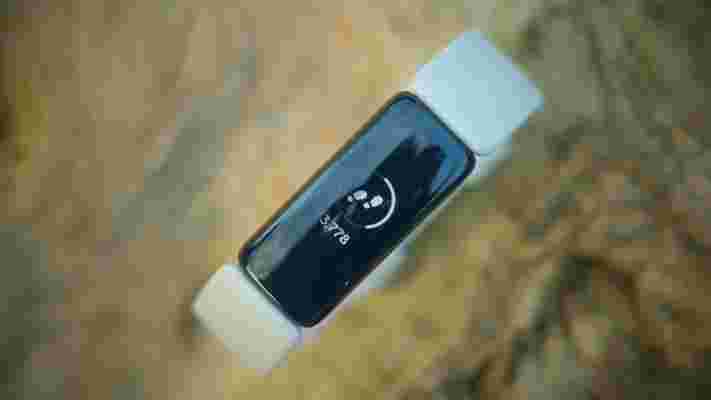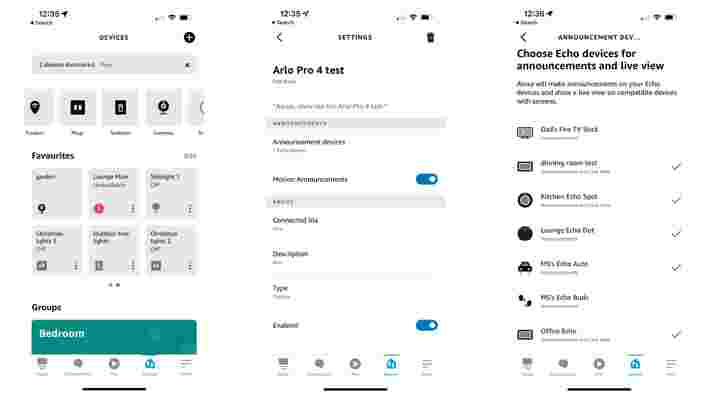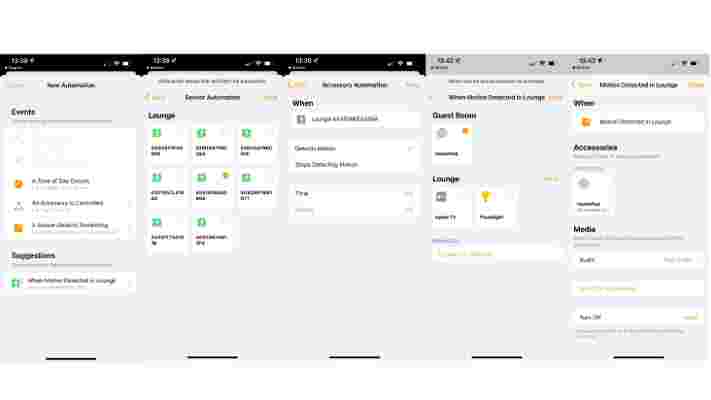A few days ago, eagle-eyed writers at 9to5Google spotted mentions of three new fitness trackers in the install files for Fitbit's Android app. Details about the devices (codenamed Rhea, Hera, and Nyota) are scant, but rumors have begun to circulate that Nyota might be a new take on the Fitbit Luxe .
I respectfully disagree; instead, I think it's far more likely that Nyota is a new watch in the entry-level Fitbit Inspire line, with an exciting upgrade.
So far, all we know about the new watches is their screen resolutions. Rhea and Hera both appear to have square displays, with resolutions of 336 x 336 pixels. This leads us to suspect that they may be the Fitbit Sense 2 and Fitbit Versa 4 – successors to the Fitbit Sense and Versa 3 that launched in 2020 and are now due for an upgrade.
The third device, Nyota, is said to have a resolution of 124 x 208 pixels, which is the same as the Fitbit Luxe, but I don't think we should jump to conclusions there. The Luxe only launched last year and certainly doesn't feel outdated yet. In fact, it's still sitting pretty at the top of our guides to the best fitness trackers and the best Fitbits .
I think it's much more likely that Nyota is a codename for the Fitbit Inspire 3, and it's getting a huge screen upgrade for 2022.
Inspiring stuff
It makes a lot of sense – the Inspire 2 , Versa 3, and Sense all launched simultaneously in September 2020, and it stands to reason that Fitbit would release their successors simultaneously as well.
The Fitbit Inspire series are simple, affordable devices that focus on the essentials: heart rate monitoring and activity tracking. We're expecting that to continue, but there's no reason at all why Fitbit couldn't switch the Inspire 2's monochrome display for a bright, vivid OLED screen this time around.

It wouldn't necessarily add much to the cost – it Fitbit is using the same display panel as it already does for the Luxe (which seems likely since it has the same resolution), there'd be no need to establish new supply chains or manufacturing processes.
I'm keeping my ear to the ground for more news, but I strongly suspect my hunch here is correct. It'll be interesting to see what else Fitbit might throw into the mix to make the Inspire 3 tempting, but a bright OLED display would be a huge upgrade by itself.
Early leak gives us a peek at two slick new Casio G-Shock watches
Images of two new Casio G-Shock watches have leaked, which appear to put a new spin on the classic square design. The images, picked up by Casio fan blog G-Central , apparently appeared via a source in Hong Kong, and are said to depict the forthcoming GMW-B5000TVB and MRG-B5000BA watches.
The GMW-B5000TVB has a reverse LCD display, and a camouflage-inspired geometric design on the bezel and strap not unlike the Garmin Instinct 2 Camo Edition. Photovoltaic cells will keep the battery charged, and it appears to have Bluetooth connectivity as well. Unlike the G-Squad Pro, this isn't a smartwatch, but we expect that you'll be able to make tweaks to time settings using the Casio Watch mobile app.
According to design blog Core 77 , which posted what seem to be official press images of the watch, the bezel and band of the GMW-B5000TVB are manufactured using multiple layers of titanium carbide. The surface is then partially masked and ion-plated to create irregular patterns of silver, brown, and black.

Core 77 claims that the watch is due to ship in June. If true, this is likely to be the US release date, with other territories following afterwards. There's no price yet, but the similarly styled GMW-B5000TVA-1 went on sale for $1,650 (about £1,200 / AU$2,200) in September last year, so we're anticipating something similar.
A dash of blue
Details of the MRG-B5000BA are scant, but it appears to have the same blue accents as last year's limited edition Kachi-Iro Collection . According to Casio, the navy hue is "the color of winning and victory in Japanese culture", and was favored by Samurai warriors, who used it to accent their armor and helmets.
We wouldn't be surprised if Casio returns to this theme; earlier this month, the company unveiled the MRG-B2000B-1A4 , which borrows the red color of armor worn by elite samurai units during Japan's Sengoku (Warring States) period.

It also has an inverted LCD display, and seems to have a black ion-plated case like that of the MRGB5000B-1 launched last month. The new watch doesn't have the gold plating of the MRGB5000B-1, but if it's a limited edition then we wouldn't be surprised if it carries a similar price tag of around $4,000 (about £3,000 / AU$5,500).
A built-in alarm is a crucial home security cam feature. So why do so few have it?
The best home security cameras are a great way to check that your property is safe and secure when you’re not around. They connect to your home Wi-Fi network and through a smartphone app let you see, and with the help of a microphone and speaker, speak to anyone in the camera’s field of view.
Many of us believe that the presence of smart security devices alone can be enough to discourage a would-be intruder - in fact, a former burglar confirmed that home security cameras do indeed deter crime . But, just the sight of a security camera isn’t always enough to dissuade someone from approaching your property.
A handful of home security cameras on the market have a built-in alarm that will trigger automatically when motion is detected. This is another way to deter would be intruders, but as far as we’re concerned its a feature that every home security camera should offer.
Chances are you’ve not bothered to check if your home security camera has a built-in alarm, and if it does, you probably haven’t even set it up to sound, but when it comes to deterring unwanted intruders, it could be your best weapon.
Best home security camera deals
Read on to find out just why we think a built-in alarm is needed on more home security cameras, or if we've already convinced you that a home security camera is your next home purchase, check out these great deals.
Security is a priority
I come from a fairly security-conscious family - for as long as I can remember my dad used old-fashioned timer plugs to make lights in the house switch on and off and set times when we were away on holiday to simulate occupancy and hopefully deter burglars.
A traditional CCTV system was always slightly out of his financial reach when I was a child, so when home security cameras started to appear on the market years later, it’s no surprise he was an early adopter of the technology that was more affordable and didn’t require wires running all over the house.
He has a Reolink Argus installed on an exterior wall at the front of the house, so its field of view covers the front door. He settled on this model because of the microSD card so he didn’t have to rely on a subscription service if he wanted to review footage captured at a later date.
He was so pleased with the camera that, when Reolink bought out the Argus 2 a few months later, he also invested in this for the rear garden - particularly as it has a rechargeable lithium-ion battery rather than relying on alkaline batteries.
Both cameras have a built-in alarm that can be triggered automatically when motion is detected. Initially, Dad didn’t use this feature at all, however, when some foxes began digging up flowers in the pots next to the front door, he decided to switch it on in a bid to deter them. Thankfully, it’s turned out to be a savior against more than just vermin....
Over the past couple of years, twice unwanted visitors have been caught on camera walking up to the front door in the early hours of the morning. However, as soon as the 80db alarm triggers, they run quickly away.
Whether this was an innocent mistake by an inebriated person that simply got the wrong house (I’ve definitely experienced that myself in my youth) or it was someone with more sinister intentions, it’s clear the alarm really does work in deterring anyone that approaches the front door.
Of course, an alarm triggering every time motion is detected could get annoying, for both Dad and his neighbors. So he set a schedule to ensure the camera only records video when motion is detected between the hours of 9pm to 7am.
Being retired, he is at home a lot of the time, and feels an intruder is more likely to try their luck under the cover of darkness - so this might not be the right solution for everyone and - frustratingly - most cameras don’t allow you to separate recording and alarm-scheduling.
What if your home security camera doesn’t have an alarm?
As we’ve already mentioned, frustratingly there are only a few home security cameras on the market that have has a built-in alarm. For example, you’ll find it on the Arlo Ultra 2 and the Arlo Pro 4 , but not the previous version Arlo Pro 3 . Meanwhile, many of Eufy’s models, such as the Eufy SoloCam S40 have a built-in alarm, but it can only be triggered manually not automatically.
So what can you do if your camera doesn’t have an alarm? If you have one of the best smart speakers or smart displays in your home, providing it is compatible with the security cameras in your home, you can set it so an announcement is made on the speaker every time motion is detected by the camera.
Just position one of your existing smart speakers and smart displays next to the front door, and turn the volume up.
An announcement is likely to have the same effect as an alarm on a would-be intruder, sending them running away as quickly as you can. You may think the sound would be muffled, but we’ve tried it using an Amazon Echo Show (1st generation) with volume at 75%. We placed the smart speaker just a few feet from the UPVC door backing on the outside wall and it can clearly be heard through the door.
How to set up an audible motion alert
Amazon’s Echo range of smart speakers are compatible with the widest range of home security cameras, including those from Ring and Blink - although given these are Amazon-owned companies this isn’t really a surprise - along with models from Arlo, Swann, Eufy and Canary.
To set this up, open the Alexa app and select the devices tabs at the bottom of the screen. At the top, you’ll see a selection of different device categories, so choose Cameras.
Now select the camera you want to get audible notifications from and switch the slider next to ‘Motion Announcements’ to ‘On’. Under the ‘Announcement Devices’ section, you can select which smart speakers and smart displays in your home will broadcast the announcement.
Next time motion is detected on the camera, the selected smart speakers and smart displays will announce “Motion detected on the ….” followed by the name you have given to the camera that detects the activity. This is a great hack to create your own alarm system that will provide an alert without having to have your smartphone to hand.

If you have a HomePod or HomePod Mini in your home, and have Homekit compatible security cameras - for example, many models in Arlo’s range along with those from Netatmo, Logitech and Eve work with Apple’s smart home system - then you can set up an automation in the home app that plays an audible alert.
However, it’s more fiddly than using Alexa-enabled speakers and requires an Apple Music subscription. In the Apple Home app, choose the Automation tab from the bottom of the screen, then select the + symbol from the top right hand corner and select Add Automation.
From the options displayed choose ‘A Sensor Detects Something’ and then select the security camera from those displayed and press ‘Next’.
Make sure ‘Detects Motion’ is ticked - you can also set up rules for when the motion detection ends - and press ‘Next’.
Select the HomePod you want the alert to be played on and again tap ‘Next’. Under the section marked ‘Media’ tap ‘Play Audio’ and then select ‘Choose Audio’.
From here you can select any track in your music library and even set a custom volume for it to be played at. Of course, most songs don’t sound like an alarm - but you could choose a track from this Sirens playlist instead. Once this is set, you can decide how long the audible alert should last before it switches off then press ‘Done’.

Those that have a Google smart speaker in their home, well, they have the most limited choice when it comes to audible motion alerts.
If you have a Google Nest speaker, such as the Nest Mini 2 , you can get an audible alert when motion is detected, however this is only possible with an Arlo Pro 3, Arlo Pro 4 or its Essential range of home security cameras connected.
It’s also not a feature offered by Google’s own Nest range of cameras - although we hope to see it made available in the future.
It’s clear, whether you have a home security camera with a built-in alarm, or you need to spend some time pairing your smart speaker with your smart security camera to create your own audible alert that triggers when motion is detected, sound really does help in deterring potential intruders.